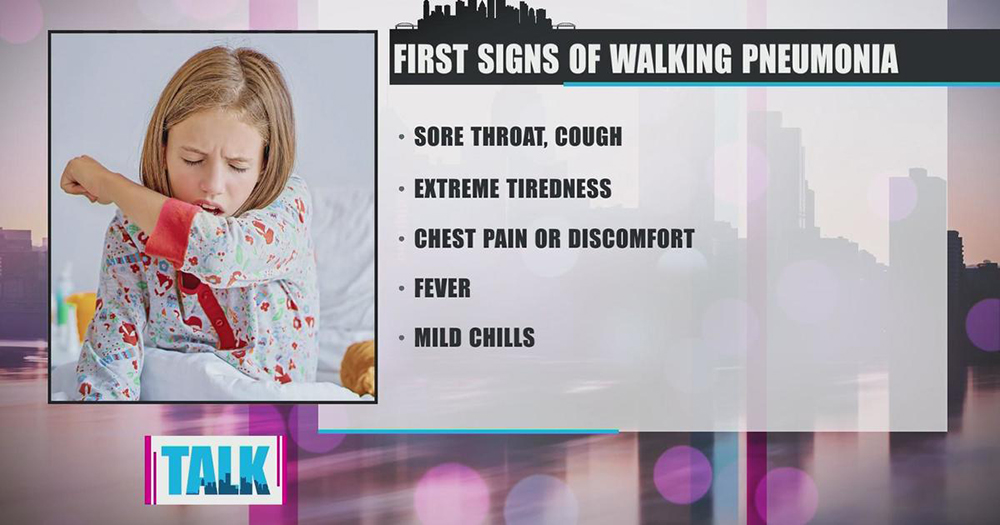|
Getting your Trinity Audio player ready...
|
Edited by: TJVNews.com
In recent months, cases of walking pneumonia, a mild respiratory illness caused by Mycoplasma pneumoniae, have surged to levels ten times higher than last year, as reported by the Centers for Disease Control and Prevention (CDC). Although this illness, commonly referred to as “walking pneumonia,” is generally less severe than typical pneumonia, it has affected a broad range of age groups, with children under 17 experiencing the sharpest rise in cases. The CDC’s alert on this issue last month highlighted the unusual spike in cases, which marks a significant deviation from typical respiratory infection trends.
Understanding Walking Pneumonia’s Rise
According to a recently published report in The Wall Street Journal, while walking pneumonia generally peaks in cycles every three to seven years, the current increase is more dramatic than usual. The CDC’s lead on Legionella and atypical pathogens, Chris Edens, noted that cases began to rise in late spring, reaching a peak in August. Although there was a slight decline afterward, Edens cautioned that cases appear to be leveling off and may even begin to increase again as winter approaches.
This infection has garnered attention due to its deceptive nature. Unlike typical pneumonia, which often renders patients bedridden with severe symptoms, walking pneumonia allows many individuals to continue their normal daily activities. This is a double-edged sword, as the milder symptoms often mean that people may not seek medical attention, potentially prolonging the spread of the bacteria. “You could be walking around with a significant infection,” Edens explained to The Wall Street Journal, adding that it might take an X-ray to fully reveal the extent of lung involvement in patients who otherwise seem relatively healthy.
Symptoms and Duration
The Wall Street Journal reported that the symptoms of walking pneumonia—cough, fever, and sore throat—can resemble those of a common cold or flu, which can make diagnosis challenging. Dr. Casey Burg, division chief of pulmonary, allergy, and sleep at Children’s Nebraska in Omaha, shared insights with The Wall Street Journal, explaining that cases are frequently encountered in outpatient settings, with some more severe cases requiring hospitalization.
One of the defining characteristics of a Mycoplasma pneumoniae infection is its prolonged cough, which can linger for weeks, even as other symptoms diminish. Burg estimated that recovery from walking pneumonia can take up to two weeks, a longer period than the typical duration of a cold or other mild respiratory illnesses. Indicated in The Wall Street Journal report was that Edens echoed this sentiment, pointing out that the infection “can take a little longer to clear than some other respiratory illnesses,” which can be frustrating for those affected.
Infection Rates and Tracking Challenges
The CDC estimates that approximately two million Americans are infected with Mycoplasma pneumoniae annually, though the true number of cases may be even higher, as the disease is not comprehensively tracked. As explained in The Wall Street Journal report, mycoplasma infections are often mild or even asymptomatic, which means that many cases go undetected or are misattributed to other respiratory illnesses. Edens explained that only a small proportion of Mycoplasma pneumoniae infections progress to walking pneumonia, but the persistent cough associated with it remains a key indicator for diagnosis.
This year’s spike has affected all demographics, but children under 17 have seen the largest increase in cases. This trend may be particularly concerning for parents and pediatricians, as children may be more likely to bring the infection into schools and other communal environments. The Wall Street Journal emphasized that this demographic shift requires vigilance, as younger individuals are often more exposed to respiratory illnesses in close-contact settings.
Public Health Implications
The recent surge in walking pneumonia cases raises questions about how public health agencies might better track and manage such infections. The CDC’s alert last month aimed to raise awareness among healthcare providers, but The Wall Street Journal report noted that the lack of a comprehensive surveillance system for Mycoplasma pneumoniae infections makes it challenging to track real-time trends.
The increase in walking pneumonia comes at a time when public attention has largely focused on Covid-19, flu, and RSV—three respiratory illnesses that often circulate simultaneously. Because Mycoplasma pneumoniae is not as closely monitored, people experiencing persistent respiratory symptoms might not be immediately tested or diagnosed, potentially contributing to underreporting and continued spread.
Seeking Medical Attention and Treatment
With walking pneumonia often presenting mild symptoms, patients may delay seeking medical attention, assuming it’s just a lingering cold. However, doctors recommend consulting a healthcare provider if respiratory symptoms persist longer than a typical cold. While most cases resolve without severe complications, early diagnosis can help mitigate prolonged illness and prevent the infection from worsening.
Dr. Burg’s observations at Children’s Nebraska reflect the importance of early medical intervention, particularly for vulnerable populations such as young children and the elderly. Burg explained to The Wall Street Journal that awareness among healthcare providers and parents alike can help ensure timely diagnosis and care, which is critical for effective recovery.
Pneumonia, as The Wall Street Journal report explains, involves inflammation in the lungs that can be triggered by various viruses and bacteria. Typical cases of pneumonia are often treated with antibiotics like amoxicillin. However, Dr. Graham Snyder, medical director of infection prevention at the University of Pittsburgh Medical Center, noted that walking pneumonia requires a different approach. Unlike typical bacterial pneumonia, which responds to amoxicillin, walking pneumonia is treated with azithromycin (commonly known as a Z-Pak), a different class of antibiotics that effectively targets Mycoplasma pneumoniae bacteria.
As Dr. Snyder explains, this infection tends to spread within close-knit environments, such as households, schools, or dormitories. Fortunately, Mycoplasma pneumoniae is less contagious than illnesses like Covid-19 or measles, so incidental, brief contact is unlikely to result in transmission. However, the illness does have a long incubation period, ranging from one to four weeks, meaning symptoms can appear quite some time after initial exposure.
As winter approaches, there is concern that walking pneumonia could resurface or increase as people spend more time indoors, heightening the risk of respiratory infections. The Wall Street Journal’s coverage underscores the need for heightened vigilance among healthcare providers and the public, particularly with Covid-19, flu, and RSV also in circulation. For now, the CDC remains on alert, and medical professionals are encouraged to consider Mycoplasma pneumoniae as a potential cause for persistent coughs, even if other symptoms seem mild.
With symptoms often blending into those of other respiratory infections, this year’s elevated rates of walking pneumonia serve as a reminder to the public and health professionals to be aware of this atypical infection, especially as other respiratory illnesses also circulate widely.




